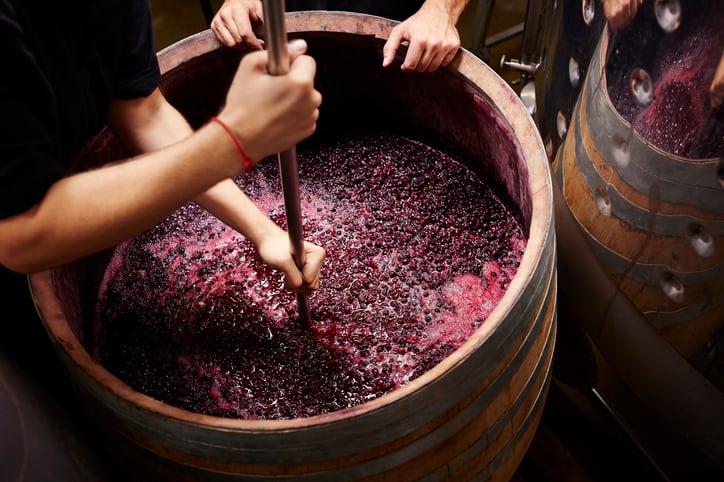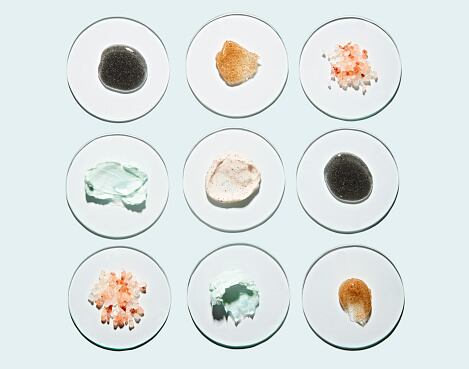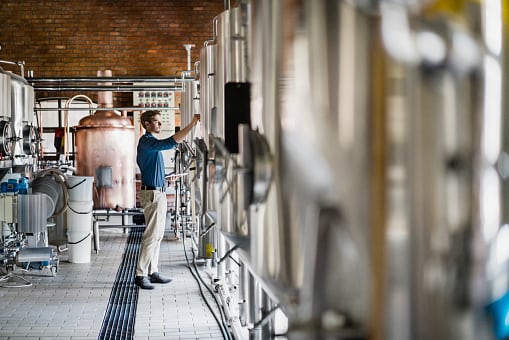A research team out of Lebanon and Italy, Hoss et al, published a review paper in Cosmetics exploring the viability of extracting active ingredients for cosmetics from wine waste.
The waste from wine making consists roughly of 25% seeds, 25% stalks and 50% skins, known as grape pomace. Hoss et al posits that grape pomace could be a good source of phenolic compounds, known for their antioxidant, antiaging, anti-hyperpigmentation and photoprotective effects.
“Among various by-products, generally considered as waste, those obtained by winemaking industries have attracted the attention of a wide variety of companies, other than the vineries,” Hoss et al said. “In particular, grape pomaces are considered of interest due to their high content in bioactive molecules, especially phenolic compounds.”
Through their research, they found grape pomace does have potential as a source for bioactive cosmetics ingredients and polyphenols. While Hoss et al said the potential ingredients require more study in cosmetics products and mastery of extraction techniques, below are six of the possible applications listed in the paper.
Antioxidants
Hoss et al, along with previous studies, has found grape pomace is a good source of antioxidant activity because of the antioxidant presence in extracts. Different researchers have tested six types of wine making waste in cosmetic formulations for their antioxidant activity.
Grape pomace extracts tested better than BHT antioxidants, but Hoss et al said it’s important to validate the antioxidant activity of the chemical assay to determine the effectiveness of the grape extract, and that the ingredient capacity is dependent on the carrier system.
The extracts also show promise in cytoprotective effects, some types protecting fibroblasts and keratinocytes.
Anti-Hyperpigmentation
Phenolic compounds can help prevent hyperpigmentation by inhibiting melanin production. Studies of white and red grapes as sources of phenolic compounds show promise in cosmetics applications, Hoss et al said.
Research shows the anti-hyperpigmentation effects of grape pomace extracts are not only dependent on the quantity of phenolic compounds, but the quality and diversity as well, and can be more than doubled by drying the pomace.
“The anti-tyrosinase inhibitory properties of the grape pomace extracts made the latter a potential anti-hyperpigmentation agent,” Hoss et al said.
Antiaging
Both white and red grapes have been tested for their antiaging effects. White and red grade stems fought elastase activity, a part of skin again.
Other types of pomace showed inhibition of both elastase, collagenase and matrix metalloproteinase-1 enzymes, giving it potential as a source of antiaging bioactive ingredients.
Sunscreen
Grape extracts show potential for UV protection bioactive ingredients, Hoss et al found.
In one study, grape pomace extract was added to a synthetic UV filter and showed effective in increasing its photoprotective effects and can both provide antioxidants to the formulation and be safely added to a UV filter.
Seed and pomace extracts showed an increase of around five UV protective points in lotions, and Hoss et al said when added at 1-10% concentration in a sunscreen can help boost photoprotection.
Skin penetration
Hoss et al said there have been many efforts made to improve the skin penetration of plant-based phenolic compounds, and an experiment was designed to test improving that factor.
In the test, which include a gel-based serum with 10% grape seed extract phytosomes and tested in vitro, Hoss et al said they saw penetration jump from 11% to more than 27%.
Oral care
The phenolic element of the grape extracts was tested in commercial toothpastes as a potential oral care ingredient, and did show an increase for both white skin and seed extracts and red grape pomace extracts. Polyphenols are thought to be capable of fighting oral disease.
Some types of extract lost phenolic activity after four months, depending on the extraction method.
Source: Cosmetics
Cosmetics 2021, 8(4), 109; https://doi.org/10.3390/cosmetics8040109 (registering DOI)
Title: Valorization of Wine-Making By-Products' Extracts in Cosmetics
Author: I. Hoss et al




